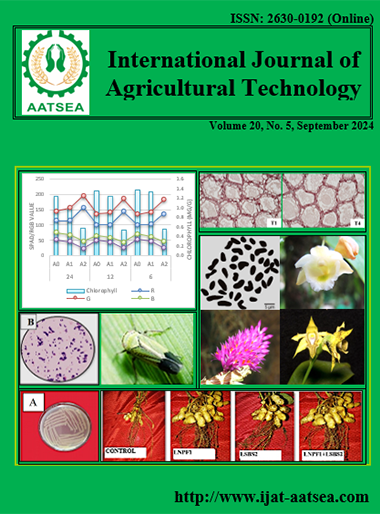Eco-friendly plastics and development: A review article
Main Article Content
Abstract
Biodegradable plastics or bioplastics are environmentally friendly plastics that break down naturally quickly. The development of bioplastics aims to minimize environmental pollution due to the current use of synthetic plastics. Biodegradable plastic has the same applications as synthetic plastic. However, after being used and thrown into the environment, this plastic can be decomposed by microorganisms into final products in the form of water and carbon dioxide gas. The advantage of using bioplastics is that they are cheap, can reduce existing packaging waste, reduce industrial waste, and prevent contamination from microorganisms. We are grouping bioplastics based on the era of development, namely "Old Economy" and "New Economy." In 2022, the global production capacity for new economic bioplastics was dominated by biodegradables, with biodegradable material types accounting for 55.6% and bio-based/non-biodegradable materials accounting for 44.4%. The market value of bioplastics worldwide is expected to continue. The main components of bioplastics are hydrocolloids, fats, and composites. The characteristics of bioplastics are divided into physical and mechanical properties. Physical characteristics include thickness, which indicates the ability of bioplastics to package products. In contrast, the mechanical characteristics of biodegradable plastics are plastic properties related to the material's response to the applied force, including tensile strength, elongation, and water absorption, which indicate the strength ability of bioplastics to withstand damage to materials during processing.
Article Details

This work is licensed under a Creative Commons Attribution-NonCommercial-NoDerivatives 4.0 International License.
References
Abral, H., Putra, G. J., Asrofi, M., Park, J. W. and Kim, H. J. (2018). Effect of vibration duration of high ultrasound applied to bio-composite while gelatinized on its properties. Ultrasonics Sonochemistry, 40:697-702.
Avérous, L. and Pollet, E. (2012). Environmental Silicate Nano-Biocomposites. Green Energy and Technology, 50.
Cengristitama. and Insan, V. D. N. (2020). Utilization of Rice Husk and Waste Oil for Making Bioplastics. TEDC, 14:15-23.
Coniwanti, P., Laila, L. and Alfira, R. (2014). Production of biodegradable plastic film from corn starch with the addition of chitosan and glycerol plastic. Jurnal Teknik Kimia, 20.
Das, S. K., Sathish, A. and Stanley, J. (2018). Production of biofuel and bioplastic from Chlorella Pyrenoidosa. In Materials Today: Proceedings (Vol. 5). www.sciencedirect.comwww.materialstoday.com/proceedings pp.2214-7853.
Din, M. I., Ghaffar, T., Najeeb, J., Hussain, Z., Khalid, R. and Zahid, H. (2020). Potential perspectives of biodegradable plastics for food packaging application-review of properties and recent developments. Food Additives & Contaminants: Part A, 37:665-680.
Folino, A., Karageorgiou, A., Calabrò, P. S. and Komilis, D. (2020). Biodegradation of wasted bioplastics in natural and industrial environments: A review. In Sustainability (Switzerland). MDPI, 12(Vol. 12: https://doi.org/10.3390/su12156030
Hamzah, F. H., Sitompul, F. F., Ayu, D. F. and Pramana, A. (2021). Effect of the Glycerol Addition on the Physical Characteristics of Biodegradable Plastic Made from Oil Palm Empty Fruit Bunch. Industria: Jurnal Teknologi Dan Manajemen Agroindustri, 10:239-248.
Hannover, H. (2023). Biopolymers facts and statistics 2022. Institute for Bioplastics and Biocomposites. https://doi.org/10.13140/RG.2.2.24122.06081
Heikmat Zaki, N., Ali, S. and Yassen Najim Obiad, S. (2017). Production of bioplastic by bacteria isolated from local soil and organic wastes. In Current Research in Microbiology and Biotechnology, 5. http://crmb.aizeonpublishers.net/content/2017/2/crmb1012-1017.pdf
Hidayati, S., Zulferiyenni. and Satyajaya, W. (2019). Optimization of Biodegradable Film Production from Eucheuma Cottonii Seaweed Solid Waste Cellulose with the Addition of Glycerol, Chitosan, CMC and Tapioca. Jurnal Pengolahan Hasil Perikanan Indonesia, 22:340-354.
Ismaya, F. C., Hendrawati, T. Y. and Kosasih, M. (2019). Pemilihan Prioritas Bahan Baku Plastik Biodegradable Dengan Metode Analytical Hierarkhi Process (AHP), 16.
Lavagnolo, M. C., Poli, V., Zampini, A. M. and Grossule, V. (2024). Biodegradability of bioplastics in different aquatic environments: A systematic review. In Journal of Environmental Sciences (China). Chinese Academy of Sciences, 142:169-181.
Li, Y., Yan, Q., Wang, J., Shao, M., Li, Z. and Jia, H. (2024). Biodegradable plastics fragments induce positive effects on the decomposition of soil organic matter. Journal of Hazardous Materials, 468:133820.
Marichelvam., Jawaid. and Asim. (2019). Corn and Rice Starch-Based Bio-Plastics as Alternative Packaging Materials. Fibers, 7:32.
Nayanathara Thathsarani Pilapitiya, P. G. C. and Ratnayake, A. S. (2024). The world of plastic waste: A review. In Cleaner Materials (Vol. 11). Elsevier Ltd. https://doi.org/10.1016/j.clema.2024.100220
Ningsih, S. H. (2015). The Effect of plasticizer glycerol of characteristic edible film mixed whey and agar. Hasanuddin University.
Permata, D. A., Mellia Putri, Y. and Didi Ismanto, S. (2024). Variation of Glycerol Addition in the Manufacture of Bioplastics from Tofu Liquid Waste. Jurnal Teknologi Pertanian Andalas, 28:46-53.
Porta, R., Di Pierro, P., Sorrentino, A. and Mariniello, L. (2011). Promising perspectives for transglutaminase in “bioplastics” production. Journal of Biotechnology & Biomaterials, 01: https://doi.org/10.4172/2155-952x.1000102e
Safitri, I., Riza, M. and Syaubari, D. (2016). Mechanical test of biodegradable plastic made from sago starch and grafting poly(Nipam)-chytosan with additional cinnamon oil (Cinnamomum burmannii) as antioxidant. Jurnal Litbang Industri, 6:107-116.
Sarasa, J., Gracia, J. M. and Javierre, C. (2009). Study of the biodisintegration of a bioplastic material waste. Bioresource Technology, 100:3764-3768.
Sofiah, Yuniar, Aznury, M. and Melianti. (2019). Mechanical Properties of Bioplastics Product from Musa Paradisica Formatypica Concentrate with Plasticizer Variables. Journal of Physics: Conference Series, 1167: https://doi.org/10.1088/1742-6596/1167/1/012048
Statista Research Department. (2023, September 5). Market value of bioplastics worldwide from 2018 to 2021, with a forecast for 2028. Retried from Https://Www.Statista.Com/Statistics/981762/Market-Value-Bioplastics-Worldwide/#statisticContainer.
Weiss, M., Haufe, J., Carus, M., Brandão, M., Bringezu, S., Hermann, B. and Patel, M. K. (2012). A review of the environmental impacts of biobased materials. Journal of Industrial Ecology, 16: https://doi.org/10.1111/j.1530-9290.2012.00468.x
Witt, U., Einig, T., Yamamoto, M., Kleeberg, I., Deckwer, W.-D. and Müller, R.-J. (2001). Biodegradation of aliphatic–aromatic copolyesters: evaluation of the final biodegradability and ecotoxicological impact of degradation intermediates. Chemosphere, 44:289-299.
Zhao, X., Wang, Y., Chen, X., Yu, X., Li, W., Zhang, S., Meng, X., Zhao, Z. M., Dong, T., Anderson, A., Aiyedun, A., Li, Y., Webb, E., Wu, Z., Kunc, V., Ragauskas, A., Ozcan, S. and Zhu, H. (2023). Sustainable bioplastics derived from renewable natural resources for food packaging. In Matter, 6:97–127. Cell Press. https://doi.org/10.1016/j.matt.2022.11.00


